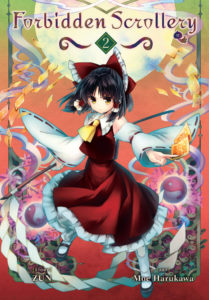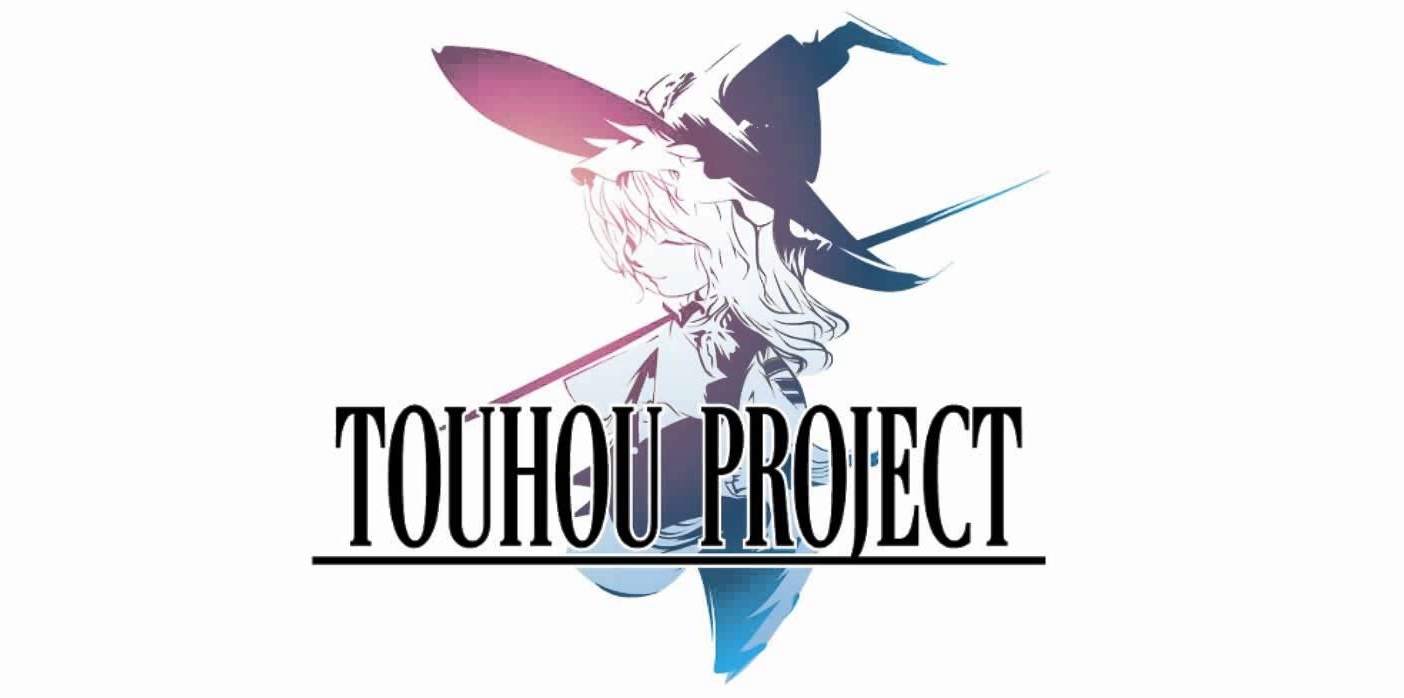Author’s note: This article contains spoilers for the manga Forbidden Scrollery and possibly other Touhou Project media.
Forbidden Scrollery is one of four official comic books to be released by ZUN in the Touhou universe. It comes after Fairy Wars and introduces a new human character, Kosuzu Motoori, a book collector running a library called Suzunaan in the Human Village. The books Kosuzu rents and sells are not just ordinary books, although she has some of those too. Many of the books Kosuzu owns, and absolutely loves to collect, contain youkai, and often of the dangerous sort. Because of this, Reimu Hakurei and Marisa Kirisame, two of the main characters in the Touhou universe, visit her library and help Kosuzu out when some of the youkai get loose.
 The cover of Forbidden Scrollery, Vol. 2 features Reimu Hakurei, the main protagonist of the Touhou Project and Shinto shrine maiden of the Hakurei Shrine. One might have thought that since Reimu is the main character of Touhou she would have been featured on the first volume of this series, but the first volume featured the series’ newest character, Kosuzu, instead. Neither volume are necessarily about one character or the other, however, containing instead at least a handful of characters.
The cover of Forbidden Scrollery, Vol. 2 features Reimu Hakurei, the main protagonist of the Touhou Project and Shinto shrine maiden of the Hakurei Shrine. One might have thought that since Reimu is the main character of Touhou she would have been featured on the first volume of this series, but the first volume featured the series’ newest character, Kosuzu, instead. Neither volume are necessarily about one character or the other, however, containing instead at least a handful of characters.
Touhou is famous for its vast array of beautifully designed characters, almost all of whom are women. I mean, just look at this eye-catching cover. Reimu’s character design, specifically her clothing, is pleasing to the eye. And the characters presented throughout the volume get even more complex and interesting as you continue reading. They’re colorful (well, not in the manga exactly, since it’s mostly in black and white) and unique, designed in a manner you could see looking amazing on a talented cosplayer.
In this volume, we meet three new Touhou characters—Remilia Scarlet, Kokoro Hatano, and Shinmyoumaru Sukuna—who Kosuzu, Reimu, and Marisa encounter as they track down new youkai causing chaos in the village. There are eight chapters in this volume, with four different stories, each introducing readers to new tales inspired by Japanese folklore. My favorite story was the second one in which Marisa encounters a little white snake who turns out to be a cute dragon. Leave it to Touhou to turn a snake, something many people are afraid of, into something adorable.
The art in this volume continues to be Forbidden Scrollery’s biggest draw. The details are what keep me coming back, rereading sections or even ignoring the writing and simply looking at the drawings. There must have been a lot of time and energy spent on each drawing, and not only the characters but the scenery too. For example, Moe Harukawa, the artist, talks about the little Easter eggs she drew into the cover of chapter 12, including objects of import from previous chapters, all stacked up around Kosuzu’s desk.
So far, most of the stories within these two volumes have been standalones, following a similar thread. But I’m looking forward to see where ZUN is going with the story, if there is going to be a larger plot line. I guess we’ll just have to wait and see.
Forbidden Scrollery was originally published by Kadokawa in Comp Ace from October 26, 2012 to July 26, 2017. It is now available in English from Yen Press.
Story: 4 out of 5 stars
Art: 5 out of 5 stars
Overall: 4 out of 5 stars
Goodreads | Indiebound | RightStuf
This review contains affiliate links. While Girls in Capes does make revenue from purchases made at affiliate links, reviews are not paid, and all reviews contain the staff writers’ honest opinions of the work.






